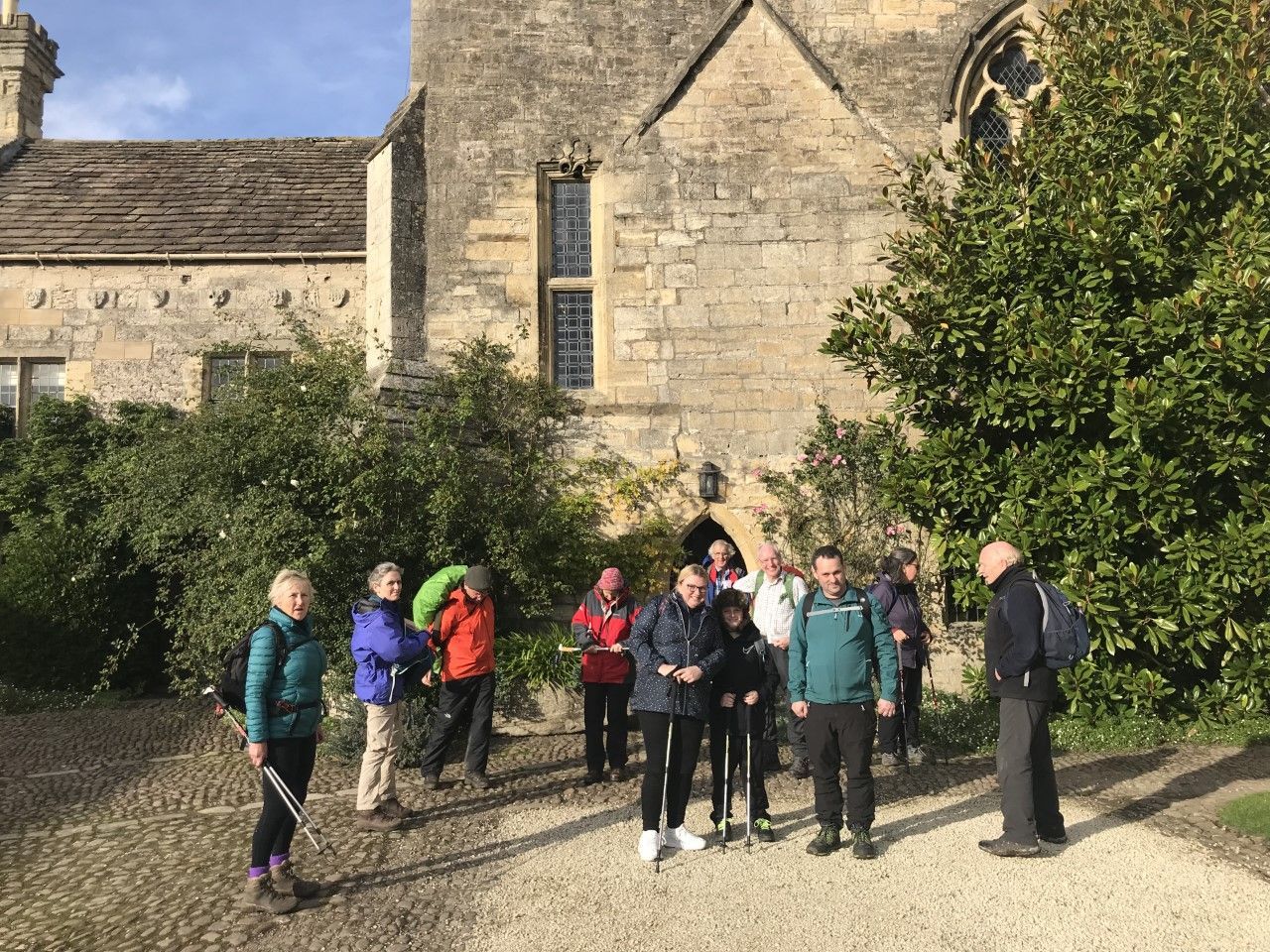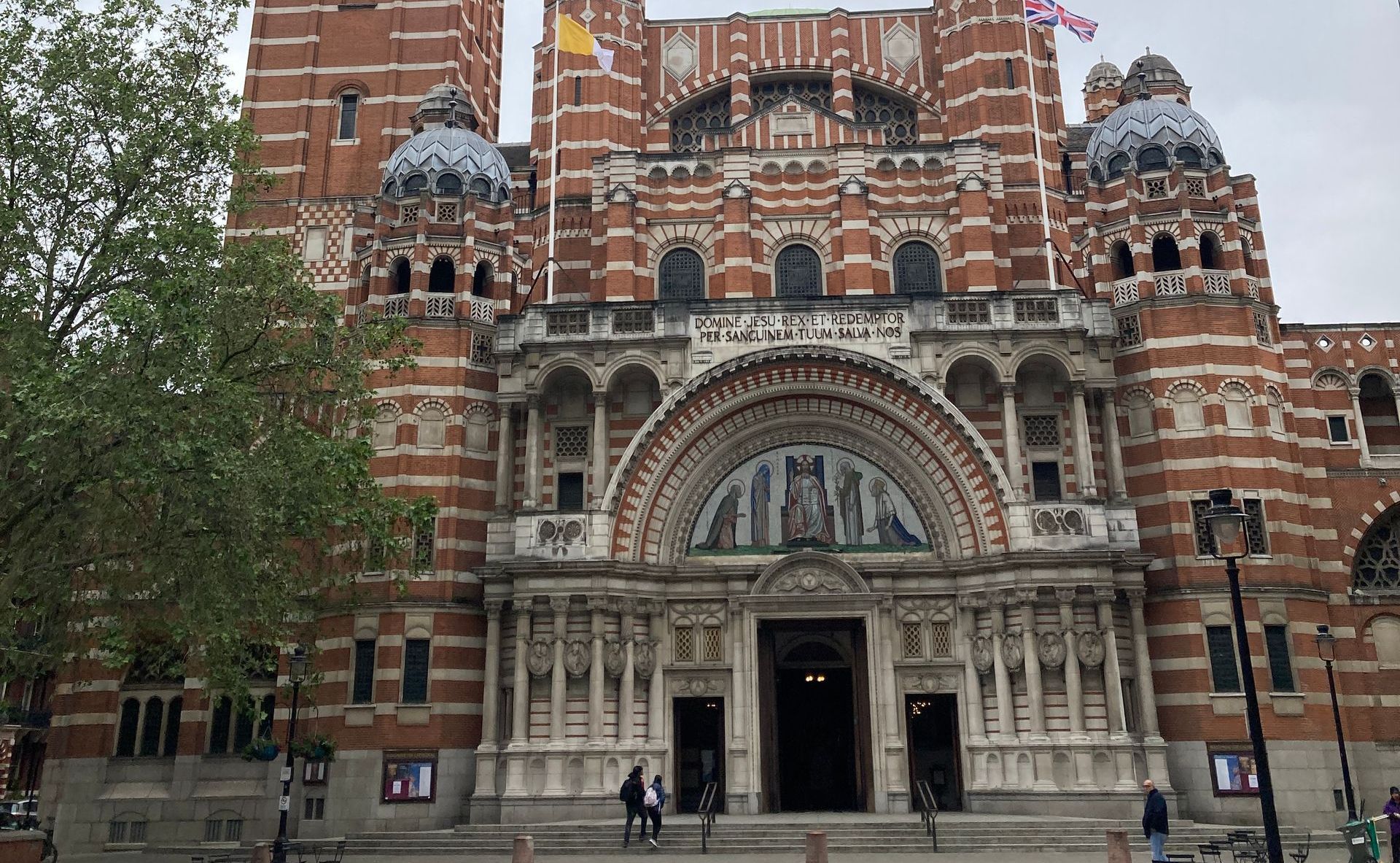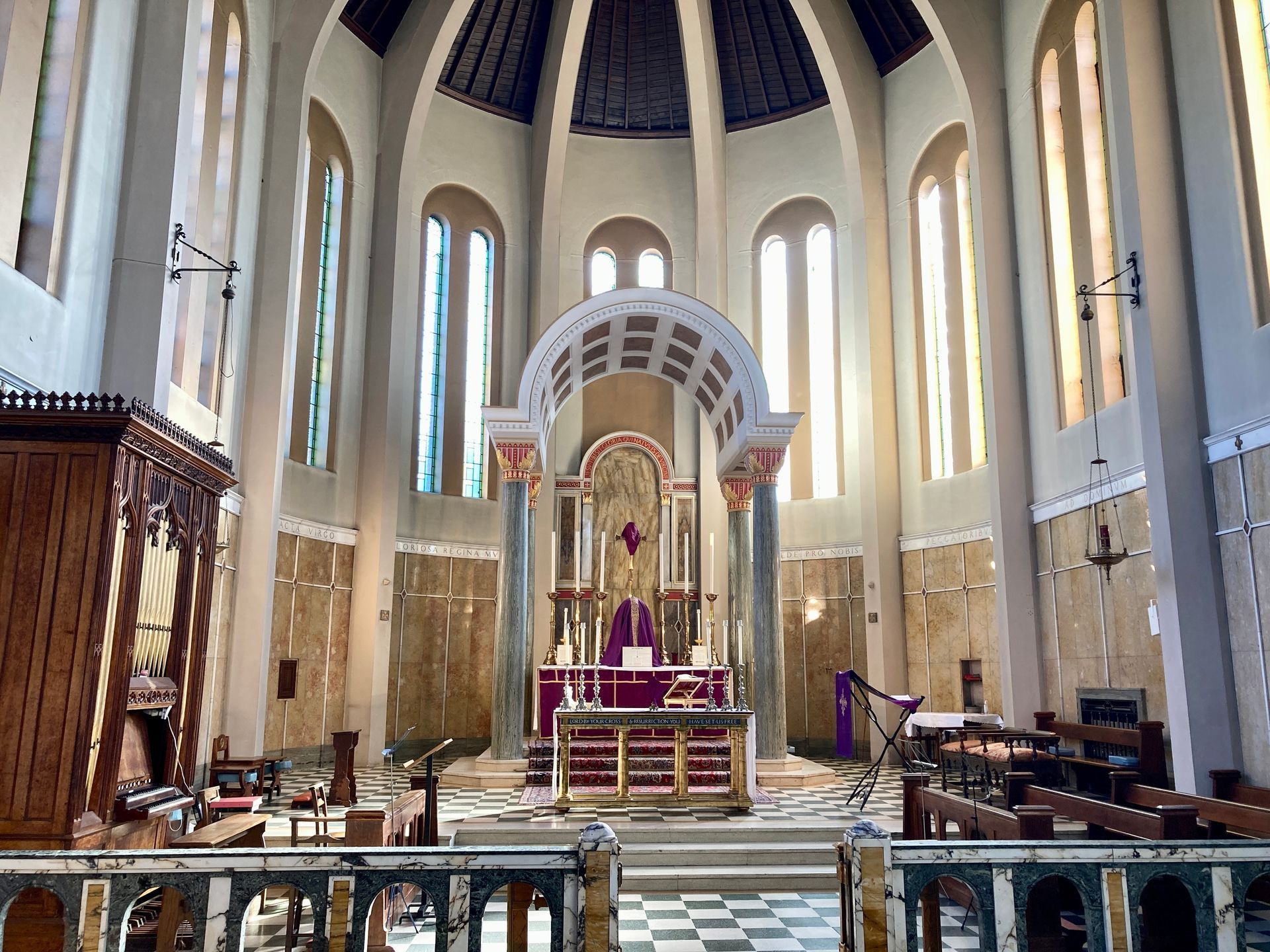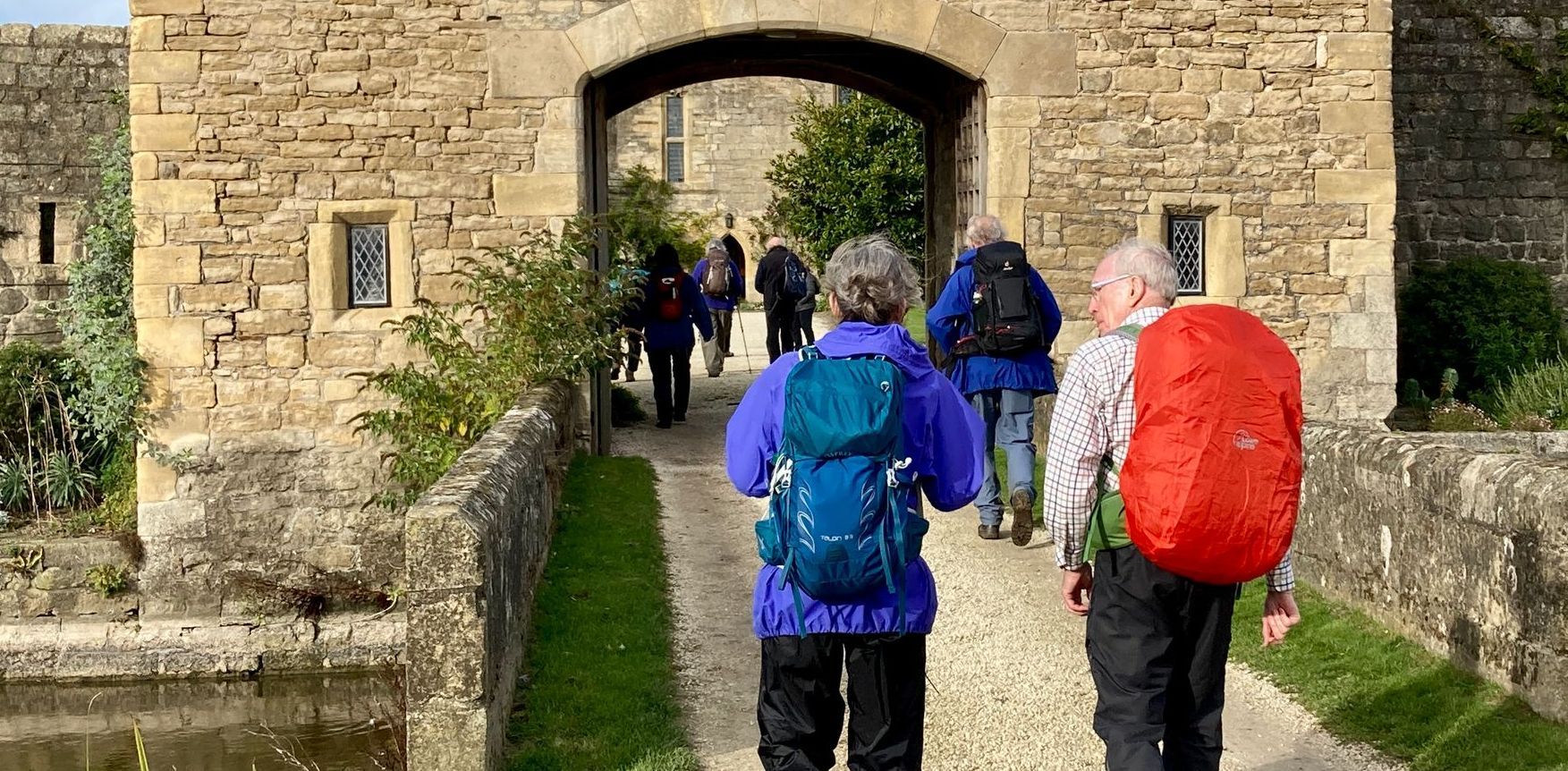The Way of Two Cathedrals and Four Shrines
A Pilgrim Way for the Ukrainian Eparchy from Westminster Cathedral to the Ukrainian Cathedral of the Holy Family in Exile and the shrines of the Blessed Sacrament, the Tyburn Martyrs, Our Lady of the Rosary and the National Shrine of Our Lady of Willesden
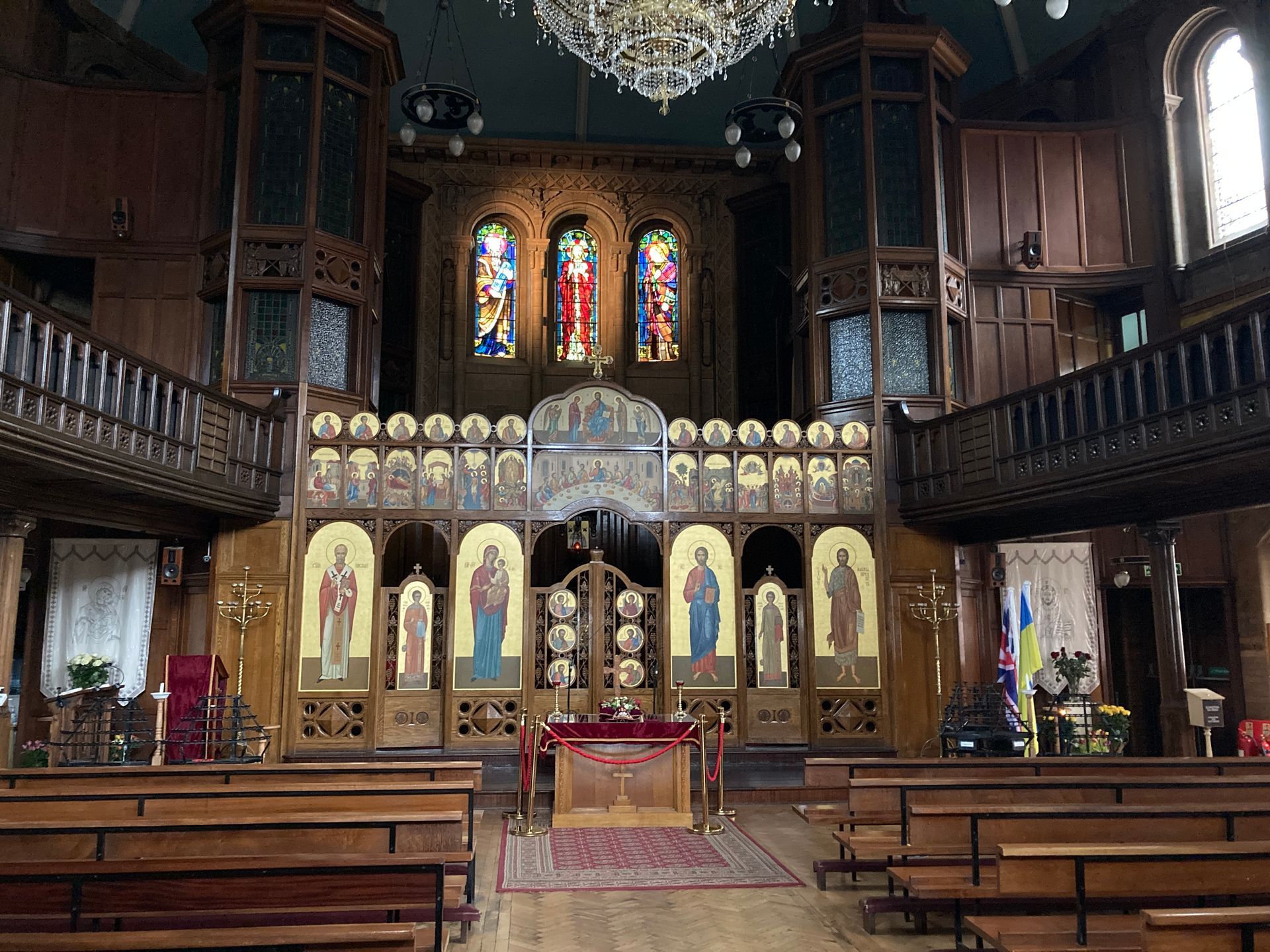
The Ukrainian Catholic Cathedral of the
Holy Family in Exile
About the route
From Westminster Cathedral the Way is east along Victoria Street, passing Westminster Abbey and the Houses of Parliament to reach the Thames Path. The Way turns north to reach the Shrine of the Blessed Sacrament in the Strand. Here the Way joins the London Martyr's Way through the West End to pass the Cathedral of the Ukrainian Eparchy and reach the Tyburn Martyrs Shrine on Hyde Park.
Here the Way follows the St Alban's Way and the Grand Union Canal around Regent's Park. The Way crosses Primrose Hill to reach the Shrine of Our Lady of the Rosary in Maitland Park. The Way turns west, passing churches in South Hampstead and Kilburn to reach the Catholic Cemetery of St Mary at Kensal Green. The Way then turns north-west to reach the National Shrine of Our Lady of Willesden.
You can find out more about the Way and download the GPX file by clicking on the LEARN MORE tab in the
interactive map below
Guidance
You can use the tabs in this section to find the information you need for your pilgrimage.
The Outer Way provides practical advice about the route.
The Inner Way describes the spiritual highlights.
Walking guidance: download the details of the inner and outer way and walking guidance and maps.
Stages: route, food & drink, accommodation and public transport
There are plenty of food and drink outlets along the Way as well as accommodation of all types. Up to the minute details of public transport can be found using the links below.
1. Westminster Cathedral to the Shrine of the Tyburn Martyrs: 5.2 miles
From Westminster Cathedral the Way is east along Victoria Street, passing Westminster Abbey and the Houses of Parliament to reach the Thames Path. The Way turns north to reach the Corpus Christi Shrine near Covent Garden. The route joins the London Martyrs Way through the West End, passing the martyrdom site in the churchyard of St Giles in the Fields; the Ukrainian Catholic Cathedral of the Holy Family in Exile; the Catholic churches of St Patrick’s, Soho; St James, Spanish Place; The Immaculate Conception, Farm St; and finally the Shrine of the Tyburn Martyrs, Marble Arch.
There is a café in the cellar of Westminster Cathedral. The Cathedral is near Victoria train and coach stations.
2. Tyburn to the Shrine of Our Lady of the Rosary, Maitland Park: 4.1 miles
The Way follows the St Alban's Way and the Grand Union Canal around Regent's Park. The Way diverts to visit the Church of Our Lady, St John’s Wood, then crosses Primrose Hill to reach the Shrine of Our Lady of the Rosary at the Church of St Dominic in Maitland Park.
3. Maitland Park to the Shrine of Our Lady of Willesden: 5.3 miles
The Way turns west, passing the Catholic churches of St Thomas More in South Hampstead and the Sacred Heart in Kilburn before reaching the Catholic Cemetery of St Mary at Kensal Green. Finally the Way reaches the National Shrine of Our Lady of Willesden.
Public transport links
Trains: https://www.nationalrail.co.uk/
Bus and tube: https://tfl.gov.uk/plan-a-journey/
Pilgrim people and places
The Metropolitan Cathedral of the Most Precious Blood
The Cathedral of the Archdiocese of Westminster, and the mother church of the Catholic community in England and Wales, was built in 1895-1903 in the Italo-Byzantine style. It was designed allow for later enrichment and over the years much has been added. Despite this much of the walls and roof remain unadorned. The building dominates the area, and the tall, slender campanile is a landmark for miles, and provides a stunning viewpoint. Since 1975, the west front has been open to view from Victoria Street across the piazza.
The Cathedral is a busy inner-city community, and casual visitors mingle with daily mass goers as the liturgies progress through the day.
The Church and Shrine of Corpus Christi, Covent Garden
The Church was designed in the 1870s to become the first church in England to be given the dedication of Corpus Christi since the Reformation. It was built ‘as an act of reparation for the indignities offered to the Blessed Sacrament in this country in the sixteenth century and since’. The interior is quiet after the bustling surrounding streets. There are statues and images of saints who have particularly upheld the Church’s teaching of Christ’s real presence in the Eucharist. In 2018 Cardinal Vincent Nichols raised Corpus Christi to become the Diocesan Shrine of the Blessed Sacrament. The Church is the home of the Catholic Stage Guild.
The Church of St James, Spanish Place
The parish grew out of the chapel attached to the Spanish embassy. The chapel was built in 1793–6 and became one of the few places in London where Catholics could hear Mass. The official connection with the embassy ceased in 1827, when the chapel was handed over to the London Vicariate. By 1880 the chapel had become too small, and the present site was acquired. The magnificent Church, in the early English gothic style was opened in 1890. Volunteers from the Companions of the Order of Malta and the Society of St Vincent de Paul use the Church’s social centre to offer care to those in need.
The Ukrainian Catholic Cathedral of the Holy Family in Exile
The Ukrainian Catholic Church is an Eastern Rite Church with its own hierarchy but in full communion with Rome. It is the mother church of the Ukrainian Catholic Eparchy of the Holy Family of London in Great Britain (not Northern Ireland). It was created in 1957 for the Ukrainian Catholic faithful in England and Wales an Apostolic Exarchate, overseen by the Holy See. In 1968 the Exarchate’s remit was expanded to the whole of Great Britain, so excluding Northern Ireland. In 2013 the Exarchate was elevated to eparchial status, which is equivalent to a diocese in the Latin Church. Today the faithful number approximately 13,500 served by 16 priests in 15 parishes and 20 mission points.
The Cathedral building was originally a Congregational church, completed in 1891. In 1965, the congregation merged, and the freehold was bought by the Ukrainian Exarchate. The change to the Byzantine liturgy involved some alterations, including the removal of the organ and pulpit, replacing chairs with pews, and the installation of an iconostasis and a confessional. The name of the Cathedral is particularly poignant since the invasion of Ukraine in 2022 and the exile of so many blameless Ukrainian families.
The Church of the Immaculate Conception, Farm St
In the 1840s the Jesuits were keen to build a church in Westminster, but Bishop Griffiths feared their presence would affect local secular missions financially. Following a petition to Pope Gregory XVI, the Jesuits given the go-ahead and the Church was opened in 1849. Initially Farm St was not a parish but the Jesuit Church in central London, specializing in preaching, pastoral care and patronage of the arts. It became famous for the work of many Jesuit priests who led many to embrace the Catholic faith.
In 1966 Farm St became a parish and today it is also the parish base for the Westminster Diocesan LGBT Catholic community. The parish has a focus on service to the homeless, refugees, trafficked people and those who suffer on account of faith. There is a moving statue by Timothy Schmalz depicting Jesus as a homeless person, sleeping on a park bench. His face and hands are obscured by a blanket, but crucifixion wounds on his feet reveal his identity. The statue can be found in the side chapel of Our Lady of the Seven Dolours.
Tyburn Convent and Martyrs Shrine
Tyburn Convent is situated near the site of the Tyburn Gallows where more than 100 Catholics were martyred during the Reformation. It is a cloistered community of Benedictine contemplative nuns who live by the ancient monastic Rule of St Benedict. The charism and work of the community is prayer. It is the Mother House of monasteries worldwide.
In 1901 the young community of Mother Marie Adèle Garnier fled to England on account of the laws of France against religious Orders. They took possession of Tyburn Convent in London in 1903 with the special mission of prayer for the people of England & Wales. For more than a hundred years the Tyburn community has been a place of Perpetual Eucharistic Adoration. Anyone can pray in the chapel, and the Shrine, which holds relics of the martyrs, can be visited by prior appointment.
The Church of Our Lady of the Rosary & St Dominic, Haverstock Hill
This Church is one of the first in England to be built by the revived Dominican Order. In 1861 the Order were invited by Cardinal Wiseman to take over the Kentish Town mission and they purchased the site in 1862. The Church was completed in 1883. The long nave has fourteen side chapels which, with the window over the high altar, symbolise the fifteen Mysteries of the Rosary. This plan is unique in England.
The shrine of Our Lady of Lourdes was added in 1912-14. It is a small replica of the grotto at Lourdes and was restored in 2002. The Dominicans are still located in the priory, and there is a community of Dominican Sisters nearby in Constantine Road.
The Shrine of Our Lady of Willesden
According to tradition, Our Lady has for centuries graced this site with her presence and a holy well which was deemed to possess miraculous properties. A Visitation report of 1249 mentions the presence of two statues of Our Lady, one of which must have been the ‘Black Madonna’, probably adorned with precious metals and jewels. The Shrine’s popularity reached its zenith at the turn of the sixteenth century, when it was frequented Queen Elizabeth of York and the future St Thomas More.
A contemporary document in 1537 records that Our Lady appeared to Dr Crewkehorne, a priest devotee of the shrine, and said that she wished to be honoured at Willesden as she had in times past. Sadly in 1538 the ‘Black Madonna’ was burnt by order of Thomas Cromwell.
Mass was said again in the district in 1885. In the following year a temporary tin chapel was erected on a site in Manor Park Road. Dr Crewkehorne’s hope was fulfilled when the Shrine of Our Lady of Willesden was revived in the 1890s, and a new statue was blessed by Cardinal Vaughan. The current much larger church in modern Romanesque style was built in 1930. The shrine chapel was refurbished in 1995.
ABOUT THE UKRAINIAN EPARCHY
OF GREAT BRITAIN
The Ukrainian Greek Catholic Church is an Eastern Catholic Church that is in full communion with the Pope and the rest of the Catholic Church. It is the second-largest particular church in the Catholic Church after the Latin Church. The Church regards itself as a successor to the acceptance of Christianity by Grand Prince Volodymyr the Great, the founder of the medieval state of Kievan Rus'. The foundation of the Orthodox Church in Rus' is traditionally dated to 988 AD.
The Eparchy of the Holy Family of London is the only Ukrainian Greek Catholic Church ecclesiastical territory in Great Britain. The Eparchy (equivalent to a diocese in the Latin Church) was established in 2013. The faithful in the Eparchy number approximately 13,500. There are currently 16 priests serving 15 parishes and 20 mission points.
